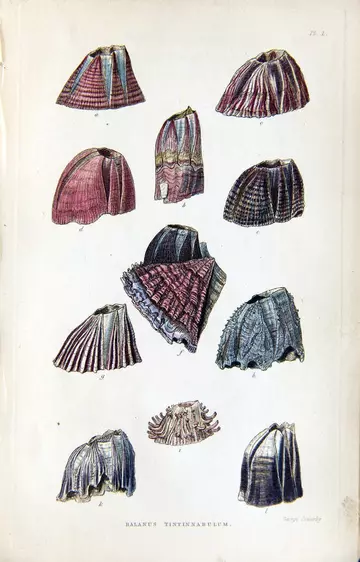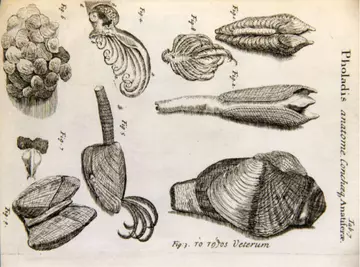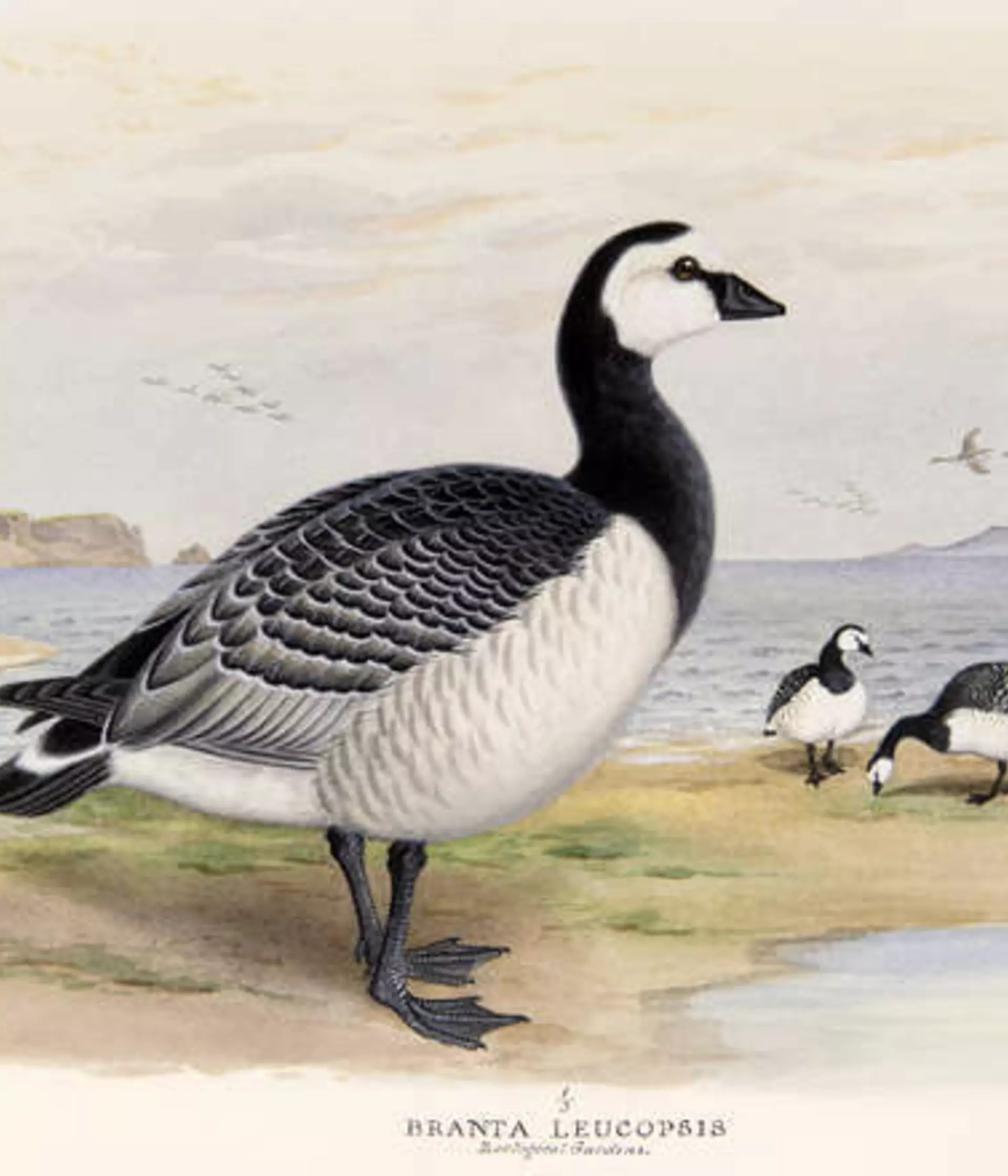
Ann Sylph, MSc, MCLIP
ZSL Librarian
Barnacles are fascinating crustaceans, Charles Darwin devoted 8 years to their study from 1846 to 1854.
Often ignored when rock pooling, or simply complained about for hurting bare feet, there are around 12 species found on British seashores. There are also some interesting myths about the goose barnacle and the barnacle goose.
Barnacles often seen on rocky shores superficially appear similar to limpets but they are crustaceans not molluscs. They are usually seen out of water, but in water their jointed legs appear and they use these to trap food particles. They have free swimming shrimp-like larvae which grow and eventually settle developing protective calcium `shells’ (Read more in Nick Baker’s article in BBC Wildlife 15 Feb 2017).
Charles Darwin became interested in barnacles when studying specimens collected on the voyage of the Beagle, subsequently he spent from 1846 to 1854 studying barnacles. John Vaughan Thompson studied the life-cycles of barnacles and reclassified them as crustaceans, previously most zoologists had followed Linnaeus and classified them as molluscs. Darwin was interested in these recent changes in classification of barnacles and began a taxonomic study of the group which occupied him for 8 years.

Goose barnacles use long stalks to attach to floating objects, with again their body being protected by chalk plates. For many years it was believed that the goose barnacle (Lepas anatifera) hatched into the barnacle goose (Branta leucopsis), below is the suggested life cycle featured in Aldrovandi 1646.

We now know that barnacle geese overwinter in Britain but usually breed in the Arctic. The myth about them hatching from goose barnacles dates back to the 12th century. As they were never seen to lay and hatch eggs in Britain this myth persisted in explaining the breeding of the geese and as Sir Ray Lankester explains 'identification was due to the exercise of a little authority on the part of the clergy in both France and Britain, who were thus enabled to claim the abundant "barnacle goose" as a fish in its nature and origin rather than a fowl, and so to use it as food on the fast-days of the Church’
This fascinating illustration of goose barnacle anatomy was featured in a previous blog. The illustration was by Susanna and Anna Lister and dates from 1696. This is published in the earliest publication we have where it is known that women made a contribution to zoological knowledge.

Do look out for barnacles and of course other animals if you are spending time on the sea shore. In the winter do look out for barnacle geese.

